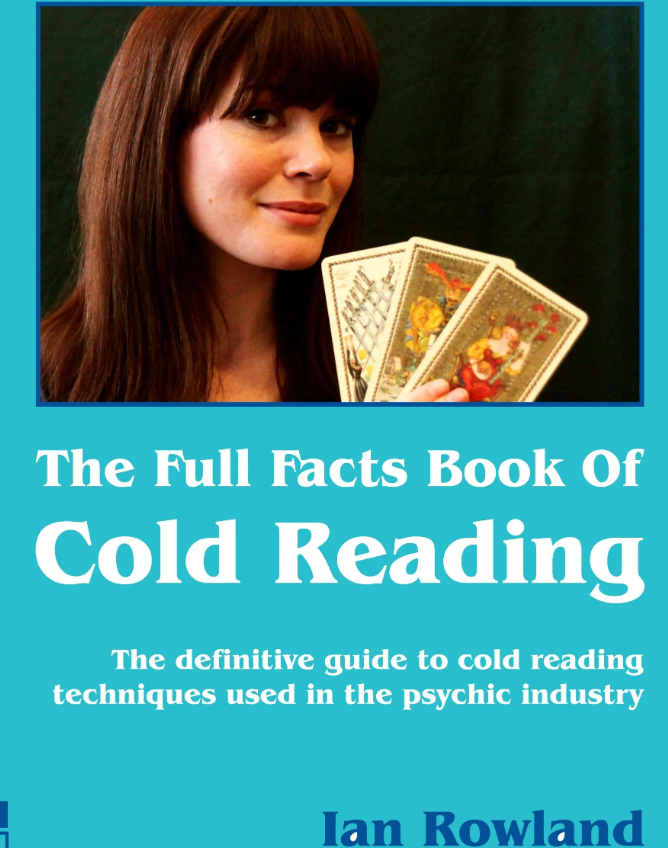Cold Reading Psychology: The Hidden Science Behind Seeming Insight
Cold Reading Psychology: The Hidden Science Behind Seeming Insight
Cold reading psychology is one of the most fascinating aspects of communication, persuasion, and influence. Whether it’s a psychic claiming to know your innermost thoughts or a salesperson who seems to “get you” instantly, chances are they’re using principles of cold reading psychology not supernatural gifts.
In this post, we’ll unpack what cold reading psychology is, how it works, and why it’s so powerful. We’ll also show you real-world examples and explain how to use it ethically or spot it when it’s being used on you.
What Is Cold Reading Psychology?
At its heart, cold reading psychology refers to the techniques and psychological principles that allow someone to make apparently accurate observations about another person, without any prior knowledge. It’s not about intuition, psychic ability, or guesswork. It’s about human behavior, language patterns, and cognitive bias.
The power of cold reading psychology lies in its ability to sound personal, specific, and insightful even though it’s often vague, general, and universally applicable.
Why Cold Reading Psychology Works
Cold reading psychology is effective because it exploits the way we process information. Most of us want to feel understood, and we’re prone to interpreting neutral or ambiguous statements in a way that makes them meaningful.
Here are some psychological factors that explain why cold reading psychology works so well:
Confirmation Bias: We notice hits and ignore misses.
The Forer Effect: We accept vague, general statements as uniquely personal.
Cooperative Interpretation: We fill in the gaps to help the other person be “right.”
Selective Memory: We remember what resonated, forget what didn’t.
When these natural tendencies are combined, cold reading psychology becomes almost magical in its impact — without any magic at all.
Classic Techniques in Cold Reading Psychology
To truly understand cold reading psychology, let’s explore some of the most widely used techniques. These are used by psychics, mentalists, negotiators, and even customer service reps anyone looking to connect quickly and make an impression.
1. The Rainbow Ruse
A Rainbow Ruse offers both sides of a personality trait in one statement.
“You’re very independent, but you also value the opinions of those close to you.”
It sounds insightful, but really, it’s a safe bet and a key tool in cold reading psychology.
2. Barnum Statements
Named after P.T. Barnum, these are vague statements that apply to almost everyone.
“You sometimes struggle with self-doubt, especially when making big decisions.”
This technique is central to cold reading psychology because it makes people feel uniquely understood using utterly common experiences.
3. The Jacques Statement
This technique tailors statements based on the subject’s likely age and life stage:
“You’ve recently been thinking more seriously about your future and what you really want.”
Again, cold reading psychology doesn’t guess it generalises with confidence.
4. The Fuzzy Fact
A “fuzzy fact” is a vague claim with multiple interpretation paths.
“I sense a recent change maybe a shift in work or a relationship?”
The brilliance of cold reading psychology is that the listener wants to connect the dots.
5. The Name Game
This is the trick where the reader offers a broad name or letter “M,” “J,” or “S” and waits for the subject to link it.
“I keep seeing the letter ‘J’ someone important to you?”
It’s not a guess; it’s a prompt. A cold reading psychology nudge that prompts you to supply the answer yourself.
Real-World Applications of Cold Reading Psychology
Cold reading psychology isn’t limited to psychics and mentalists. It shows up in many professional settings, often dressed as empathy, intuition, or insight.
1. Sales and Marketing
Good salespeople use cold reading psychology to build rapport and understand buyer needs often before the buyer has expressed them.
“Most people I speak to in your industry tell me they’ve been feeling a little overwhelmed lately…”
This immediately sounds tailored and creates connection a classic use of cold reading psychology.
2. Coaching and Therapy
Life coaches and therapists sometimes use elements of cold reading psychology (often unconsciously) to engage clients.
“You’re the kind of person who holds yourself to a very high standard, aren’t you?”
That might be true — but it’s also true of nearly everyone who seeks personal development.
3. Dating and Social Dynamics
On a first date or in conversation, people often use cold reading psychology instinctively.
“You strike me as someone who’s been through a lot but doesn’t talk about it easily.”
Said with the right tone, this blends mystery, empathy, and insight all hallmarks of cold reading psychology.
Cold Reading Psychology in Entertainment
Of course, the most famous use of cold reading psychology is in stage shows and psychic readings. From mediums to tarot readers, performers use polished scripts built on these techniques.
But make no mistake: the audience is participating. Cold reading psychology relies on mutual engagement. The reader offers the canvas; the subject supplies the colour.
And this collaboration conscious or not is what makes cold reading psychology so compelling.
The Ethics of Cold Reading Psychology
Cold reading psychology is not inherently unethical. Like any tool, its value depends on how it’s used.
Ethical Uses:
Building rapport
Enhancing conversation
Creating entertainment (with disclosure)
Supporting empathy and connection
Unethical Uses:
Pretending to have psychic powers to charge money
Exploiting grief or vulnerability
Manipulating for personal gain
Being aware of cold reading psychology protects you from being taken in and helps you use it responsibly.
How to Spot Cold Reading Psychology in Use
If you’re ever unsure whether someone is using cold reading psychology, look for these signs:
They start with generalities that seem specific.
They let you do most of the talking.
They reframe misses as future events (“It hasn’t happened yet…”).
They use vague compliments or flattery.
They avoid hard details but sound confident.
Once you’ve seen cold reading psychology at work, it becomes easier to identify — and impossible to unsee.
Cold reading psychology is not about deception it’s about understanding. It’s the science of how we interpret meaning, connect with people, and form impressions.
Whether you’re on stage, in a sales meeting, at a party, or on a first date, cold reading psychology gives you an edge. Used ethically, it can enhance connection, build trust, and deepen communication.
And knowing the tricks? That gives you power not just to use cold reading psychology, but to defend against it when needed.
So the next time someone says, “I don’t know why, but I feel like I understand you already…” smile. You’re witnessing cold reading psychology in action.






